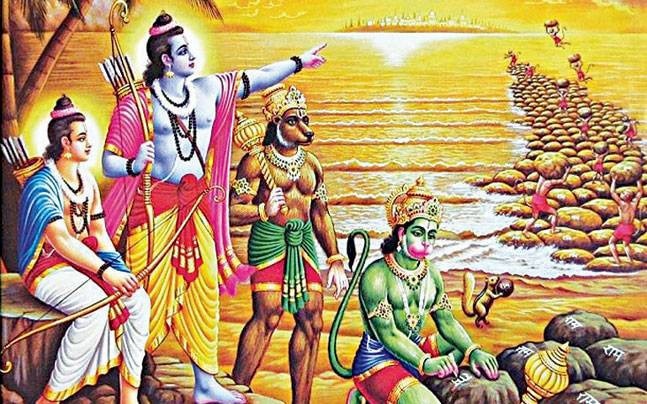The new series on Ramayana Trail will look into how different Asian countries are connected with Ramayana, the festivities associated with Lord Ram, the significance of Ram, and how people relate Ram in connection with India. This interesting series will look into the countries that are looking at Ram as God as well as how people associate themselves with this epic.
Introduction
 Lord Ram and Asian countries is a vast subject. Everyone has his own interpretation of Lord Ram and Sita and it is very based on their cultural ethos. To start with we look at how recently Nepal was trying not just to claim Lord Ram but also the birthplace of Lord Ram, Ayodhya.
Lord Ram and Asian countries is a vast subject. Everyone has his own interpretation of Lord Ram and Sita and it is very based on their cultural ethos. To start with we look at how recently Nepal was trying not just to claim Lord Ram but also the birthplace of Lord Ram, Ayodhya.
Nepal Prime Minister KP Sharma Oli has fired yet another salvo against India. This time it is a cultural one. After having intimidated the neighbour and world’s largest democracy over the border issue, the Nepali PM seems to be interested in fiddle about a different track. Recently Oli was in news for changing the map of Nepal country and also for trying to include portions of Indian territory as part of their country.
The map issue went a long way and it has been almost sorted out. Moreover, India didn’t want to make it a big issue because it believes in the harmonious neighborhood. Having been quiet doesn’t mean that the Nepal government goes to any extent. This was not made clear to Oli and his government and so they are now playing cultural card!
Nepal PM says that Lord Ram belongs to Nepal, so was Ayodhya. He went to even say that India has made a cultural encroachment by creating fake Ayodhya. “Ayodhya, the ancient city believed by millions of Hindus to be the birthplace of Lord Ram, is actually a small village near Kathmandu,” he said.
Oli’s contentious remarks come amid a row between the two countries over a revised political map that sees Nepal claim Indian territory – the Lipulekh Pass in Uttarakhand and the Limpiyadhura and Kalapani areas.
Oli’s statement has got the expected visibility in India, where he is viewed as the main hurdle towards fostering smoother India-Nepal relations by a certain section of the media. “We have been suppressed culturally. Facts have been twisted. Even today, we believe that Sita was married to an Indian prince, Ram. We gave her not to an Indian, but to the one from Ayodhya. Ayodhya is a village that lies to the west of Birgunj,” he said.
Must Read: Religion & Welfare – Arya Samaj: Breaking Human Barriers for Humanity
Spelling his logic for saying Ayodhya belongs to Nepal, he said, “If Janakpur was here and Ayodhya was there [ in India], how would one know that there was a princess eligible for marriage. There was neither a telephone nor a mobile phone. It was just impossible to know about the match.”
Reacting to claims of Nepal PM, Mahant Nritya Gopal Das, chairman of Sri Ram Jamabhoomi Tirath Kshetra Trust, said, “The PM of Nepal must keep Lord Ram out of regional politics. His comments are unwarranted. He must know that Lord Ram was a ‘Chakravarti’ emperor and Nepal was also a part of his kingdom. Ties between India and Nepal are even older than history.”
It is not just Nepal, the Ramayana has spread to many Asian countries outside of India, including Burma, Indonesia, Cambodia, Laos, Philippines, Sri Lanka, Nepal, Thailand, Malaysia, Japan, Mongolia, Vietnam, and China.
So the ownership of Lord Ram cannot solely be made by any country, everyone nation has its own story of Ramayana and has even the trail of Lord Ram in their places.
[video_ads]
[video_ads2]
You can send your stories/happenings here:info@religionworld.in









